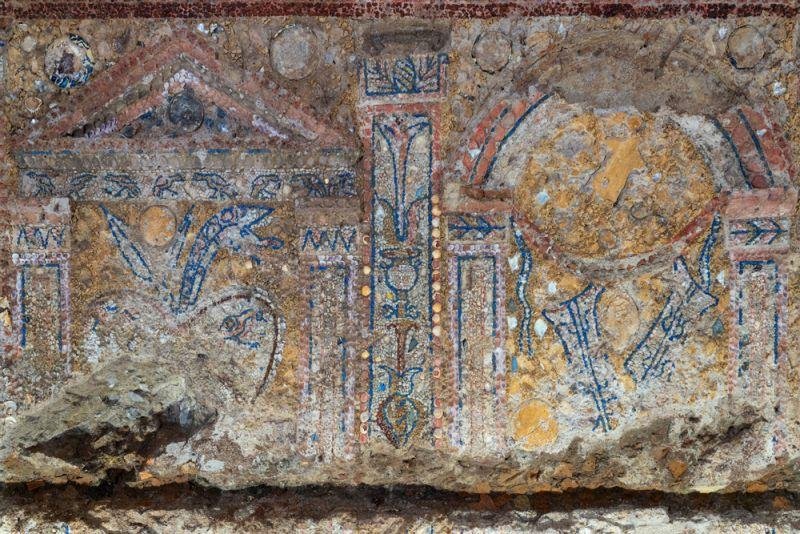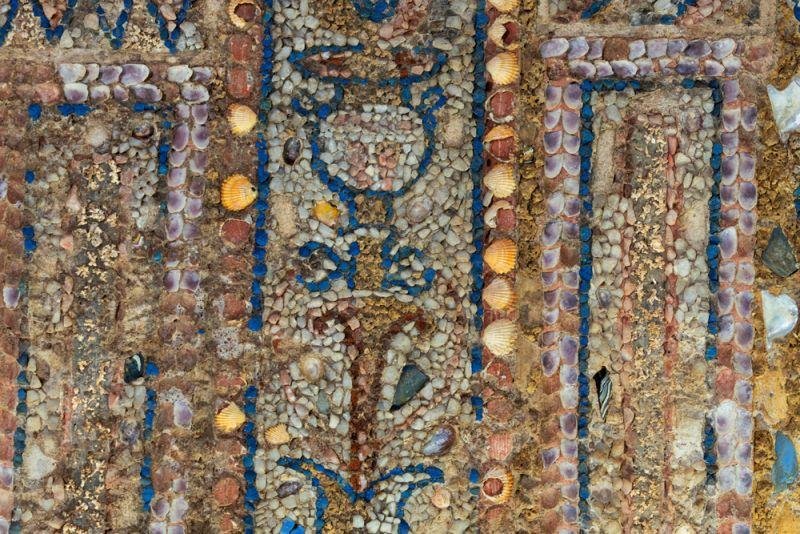Archaeologists from the Colosseum Archaeological Park have uncovered an intricately adorned Roman domus situated between Rome’s Palatine Hill and the Forum.
 Credit: Italian Ministry of Culture
Credit: Italian Ministry of Culture
The domus, constructed in multiple phases between the late 2nd century BCE and the end of the 1st century BCE, stands within the vicinity of the Horrea Agrippiana warehouse complex along the Vicus Tuscus, a key trading street connecting the Roman Forum to the Tiber River port.
The discovery of the ancient house came to light as part of an extensive research project conducted by the Colosseum Archaeological Park, according to the Italian Culture Ministry.
Director of the Colosseum Archaeological Park, Alfonsina Russo, stated: “The excavation confirms what ancient sources said about the presence of extensive residences of representatives of Roman senatorial families in the northwestern area of the Palatine.”
 Credit: Italian Ministry of Culture
Credit: Italian Ministry of Culture
The centerpiece of the domus is the “specus aestivus,” a banquet hall designed to replicate a grotto, encircling an atrium/garden. This space, animated by spectacular water effects facilitated by lead pipes, served as a venue for entertaining and banqueting during the summer months.
Russo expressed enthusiasm about making this historically rich site accessible to the public, stating, “We will work intensely to make this place, among the most evocative of ancient Rome, accessible to the public as soon as possible.”
One of the most striking features of the domus is an extraordinary mosaic wall covering referred to as “rustic,” dating back to the last decades of the 2nd century BCE. Composed of sea shells, Egyptian blue tesserae, precious glᴀss, marble fragments, and other colored stones, this mosaic depicts intricate scenes of naval warfare and conflict. The representation includes weaponry, trumpets, and ship prows adorned with tridents and rudders, symbolizing triumphs both on land and at sea.
The mosaic’s complexity is unparalleled, with four niches delineated by pilasters showcasing depictions of weapons, Celtic trumpet horns (carnyx), and helmets with triremes. The large upper bezel features a captivating landscape portraying a city overlooking the sea, crossed by three large ships, suggesting a potential military conquest by the domus owner. Minister of Culture Gennaro Sangiuliano acknowledged the historical significance, stating, “It is an important outcome… which we will ensure to safeguard and make accessible to the public.”
 Credit: Italian Ministry of Culture
Credit: Italian Ministry of Culture
The newly unveiled domus adds to the recent archaeological revelations on the Palatine Hill, complementing sites like the Ninfeo della Pioggia and the majestic Domus Tiberiana. Director Alfonsina Russo highlighted the long-term research efforts, noting that the findings reward the commitment to knowledge and its diffusion, further contributing to the diverse cultural offerings of the Archaeological Park of the Colosseum.
The ongoing excavations are slated to conclude in the first months of 2024.





